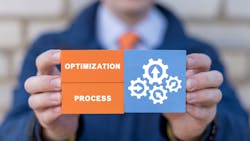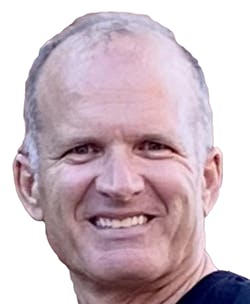Go and see — Why observation is essential to your reliability program
Joe Kuhn, CMRP, former plant manager, engineer, and global reliability consultant, is now president of Lean Driven Reliability LLC. He is the author of the book “Zero to Hero: How to Jumpstart Your Reliability Journey Given Today’s Business Challenges” and the creator of the Joe Kuhn YouTube Channel, which offers content on starting your reliability journey and achieving financial independence. Plant Services managing editor Anna Townshend recently spoke with Joe about the importance of leadership and how to establish a successful reliability culture at your plant.
Listen to Joe Kuhn on The Tool Belt Podcast
PS: So your first column for Plant Services was called Go and See, and it was about creating a reliability culture at your plant, so can we talk about what you mean by Go and See and how does that relate to your company's reliability journey?
JK: Very key topic here. In this is the essence of combining Lean concepts with reliability and maintenance concepts. First thing you need to understand is every reliability and maintenance best practice is designed to eliminate waste. That's all it is. Why do you do PMs? You want to take the mean time between failure out, you want to make it bigger, and you want equipment to last. Why do you do planning? You do planning so that a work crew has the parts and pieces to do the job, plus has the coordination with production, or maybe environmental or safety to do a job. And it’s to make the work more efficient, and to make the outages as small as possible and to make the precision as good as possible. That's why every single reliability maintenance tool eliminates waste. Okay, that's what it's about now. Doesn't it make sense to know the waste in your plant before you start implementing tools? This is one of the problems with traditional deployment and reliability best practices, they just start deploying the best practices randomly at their plant without knowing the problems they have in their plant. Okay, so that's fundamental.
Also, I think KPIs, key performance indicators, and opinion, those two added together never equal reality. They do not equal reality. If you're basing your decisions, your actions on the KPIs and your opinion, your experience, you're making a mistake. You have to add observation to that. That's Go and See. Do you have it as part of your culture to go and see? Somebody brings you a problem. They say we got five mechanics that are going to retire at the end of this year, we need to replace five mechanics. That sounds reasonable. We’ve got this many work hours, we’ve got this much backlog, this many PMs, we need to replace these five people. Say they're $100,000 a piece? That's a $500,000 decision there. That's probably on the low side, it's probably closer to $700,000. Okay, that sounds reasonable. What about going and seeing? Let's go see reality.
Most of the plants I go into have the effectiveness of their people measured by wrench time (I don't want to go off into that, but it just really an effectiveness measure) of about 15%. I've seen 10%; I've seen maybe 20%. So you want to hire five people to be 15%? Now, people argue what world-class is; some people say 50%. In some organizations, if you're working on an elevated crane, or overhead crane working on the roof, heavy equipment with lots of safety rules, 50% wrench times would be hard to get. But I've seen 30%. I've seen 35%. I've seen 40%. So going from 15% to 30% is not that hard to do with some best practices, if you know where your waste is? So those five people that are retiring, they’re going to do great things. Do you need to replace them? Or can you put in systems to make every employee instead of being 15% efficient, 20% efficient, then you may have five too many people even after they retire. And when I say five too many, don't think that's a waste. Now, I can assign people to condition monitoring. Now, I can assign people to problem solving. Now, I can have one operate as a ticket or stager. I can have an additional planner. You’ve got all these different roles to invest those people in by knowing the waste that's at your plant.
One of the things I did at my plant is I required (this is one of the things you can do as plant manager) I required 16 hours of observation to be part of every dataset. So when somebody came in and presented, they say, here's the KPI, here’s my experience, and here's my observation data to go along with it. It changes the conversation. It totally changes your decisions. And what's one of the greatest things about that is, when you understand the problem better by adding observation, most of the improvement ideas are free. Free. You don't have to hire people. You don't have to ask, hey, I know how to get a lube excellence program out there, I just need $100,000. You can probably have 80% of a lube excellence program for free. That’s what I love about observation and go and see, it gives free solutions that you can implement on Monday, next Tuesday, or a month from now. That's the essence of what I'm talking about, combining Lean with reliability maintenance best practices. Go and see. It's missing at almost every plant I go into. They'll tell me, here's what's going on. Here's the help we need. Here's the solution. Have you gone out and observed? No, well, let's go out for the next three days and observe, let's just go out. And when I do that, with the plant manager, with the maintenance manager, 100% of the time, they're shocked 100%. And guess what, I like to say this, Anna, that the day that I choose to observe and go and see with somebody in a plant, guess what, it's the worst day the plant has ever had. It never runs like this; this is the worst day we've ever had. And then we observe the second day, and guess what? The second day is the second worst day we've ever had in this plant. The third day we go out and they go, you know, maybe we need help, maybe we don't understand our current state. So that's what Go and See is all about. If you want to accelerate your career, anybody listening to this, you want to accelerate your career, add, Go and See, add observation to your data set, and you'll be right more often. You will implement solutions faster and for almost no cost.
PS: Good advice for all.
JK: Oh, yeah, and that's the essence of my book. My book really chronicles the first 30 days as a maintenance manager in a plant. What do you do? How do you decide what to work on? And the previous maintenance manager couldn't hire people, needed more money, all that kind of stuff that gets in the way. We’ve got this new production product that's getting in our way. It works through how to do that effectively.
PS: Okay, let’s talk a little bit about some of the bigger themes from your book. You have a ton, as I said, of really hands-on advice for getting started on your reliability journey, how to get more out of your current program, or how to take what you're already doing and take it up to the next level. So I do encourage everyone to pick up the book, as you said, you can get it on Amazon. But here, let's zero in on a few important concepts. How is reliability a continuous process? And why is it important to continually sell reliability within your organization?
JK: Well, one reason, the number one go-to tool of some top level managers is to cut cost. That is always out there, everybody. Anybody that's been in reliability and maintenance knows the evil words is we need to cut cost. Now, those people can look at the R&M organization and see them as a cost, or they can see them as a waste elimination machine. That's all determinant by how much you sell. You’ve got to have a pretty formal plan to say, how are we going to sell our successes in reliability and maintenance?
One of the things I like saying is, nobody knows about the failures that you didn't have. If you go out there in reliability and maintenance, and you find a problem with your motors, and you used to spend a million dollars on motor maintenance and repairs a year. Just pick a number of a million dollars, and you cut that down to $100,000. 90% Less failures. $100,000 and who knows about that? It just happened. Well, I’ll tell you, the production folks will be very quick to say, well, we're running better. We're running this equipment better. We're making more money. We're spending less, this is great. The R&M people need to say, wait a second, let's connect the dots here. We identified motor maintenance as an issue. It was our top issue the last 10 years; we identified it. We took these three actions and look what's happened. Here's a $900,000 savings. We project that out, so you’ve got to sell that. You’ve got to connect the dots. You’ve got to do that maybe in a monthly newsletter. I like to do it in a monthly newsletter, plus some email blasts. Very simple, you take a picture of something, hey, we found this one on infrared last time, and it cost us $50,000 to repair, and this time it costs $25. And that's the whole email. I had one person on my staff that I asked them to write two email blasts a week. So we were, boom, getting that sales pitch out every single week. And then at the end of the month, we’re connecting the dots on a bigger level. You do this, you establish this culture of ‘We are the Money Saving Machine.’ When business drops off by 15 or 20%, the knock on the door says, Joe, how can you go faster? Instead of, we need to cut your budget by a million dollars, or I need you to cut your budget by 10%. So that’s the continuous selling you do, because cost cutting, you cannot have that be the best option. Why does the vice president come in and say I need to cut costs by 10%, just cut it? It's because they have no better ideas. We have got to give them a better idea. And we’re got a better idea, but we have to know that we are in sales.
PS: So this last question is an interesting one as well. And I don't think we would have a consensus if we asked a group of people this question. So who owns reliability, Joe? Maintenance, operations management? What do you think?
JK: I strongly contend that there is a right answer to this. There’s not a debate. It's operations. Operations owns reliability. The simplest example is, Anna, who owns the reliability of your car? You’re the one that drives it. You're the one that listens to it. You take your car into the maintenance shop for the 100,000-mile check. And they say, yeah, man, this belt looks bad. Your tires are bald, and your transmission is making noises. And then you say, I don't want to fix that. And then you drive on down the road. You're going out to Yellowstone National Park on vacation, and your car breaks down. Do you blame the mechanic? I’ve got to give kudos to my buddy Rodney. He coined this. There are advisors and deciders for reliability. The deciders are operations, they decide to give up the equipment for maintenance. If I ask for a 12-hour outage and they give me four and say, ‘do the best you can,’ who owns it? Operations owns it. There are deciders. Maintenance/R&M people are advisors. They're saying, here's the PM we need to do, there's the condition monitoring, here's the action we need to take. They're advising the decider, the owners of reliability and maintenance, the owners of it. Now that doesn't make the job of the maintenance manager or the reliability engineer any easier. They've got to be great advisors, they’ve got to sell, they’ve got to convince, and they have to be efficient. There's so much to do there. You’d like to say it's a partnership, but I have never found that to be true, that it's a partnership. It's operations owned, as soon as you make that decision. And as soon as the president or whoever is over the plant manager, or production manager, as soon as they figure out, I'm going to start holding you, the production manager, in charge of reliability, watch everything change. You'll have the time for the outages. You'll have the time to do that because they'll see it as an advantage instead of an excuse, or something to blame on somebody else. It'll change the culture of your plant, that one thing. Make operations in charge of reliability, and watch what happens.
PS: Well, you’ve convinced me. I think you made a good case. And I like advisors and deciders. That's good. Well, thank you so much, Joe. I hope our readers and listeners got to know you a little bit better. I think they did. And if you're interested in reading more from Joe, you can find him in Plant Services with his Leadership in Action column. Again, check out his Zero to Hero book. And Joe, where can folks find you on YouTube, if they're looking for you?
JK: Just type in Joe Kuhn and I'll come up. You'll see my face.
About the Author

Anna Townshend
managing editor
Anna Townshend has been a journalist and editor for almost 20 years. She joined Control Design and Plant Services as managing editor in June 2020. Previously, for more than 10 years, she was the editor of Marina Dock Age and International Dredging Review. In addition to writing and editing thousands of articles in her career, she has been an active speaker on industry panels and presentations, as well as host for the Tool Belt and Control Intelligence podcasts. Email her at [email protected].

